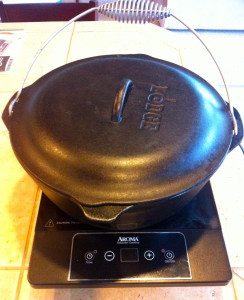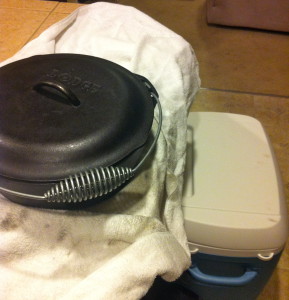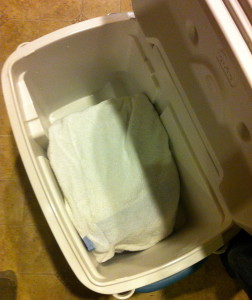Most preppers, our family included, have a fair amount of dried beans in their food storage. If you store beans you need to know how to prepare them.
Quick review, there are two steps to preparing dried beans: soaking and cooking. Soaking (typically overnight) allows dried beans to absorb water and rehydrate; cooking beans makes them tender and digestible. The beans need to be brought to a boil, then reduced to a simmer for 60 to 90 minutes.
As our family’s preparations become more involved, I find myself focusing more on the ENERGY aspect of our basic needs (food, water, shelter, security, and energy). While I’m not planning on powering all the electric amenities of our day-to-day lives in a power outage, we plan to power some basic lights and small appliances, have a warm house, and BE ABLE TO COOK FOOD.
Our family likes beans (and rice), and they are a core part of our long-term food storage, so I wanted to be able to prepare them as efficiently as possible. Cooking beans, even at a simmer, for 60 to 90 minutes uses a fair amount of energy resources.
 To increase our energy efficiency we recently bought an Aroma Induction Cooktop (Costco $50).Think of it as a very efficient (cooks/boils up to 70% more faster than traditional stove tops); very safe (immediately cools when the pot is removed) hot plate. During a power outage we’ll only have to power the induction cooktop, not the whole stove, to use an electric burner.
To increase our energy efficiency we recently bought an Aroma Induction Cooktop (Costco $50).Think of it as a very efficient (cooks/boils up to 70% more faster than traditional stove tops); very safe (immediately cools when the pot is removed) hot plate. During a power outage we’ll only have to power the induction cooktop, not the whole stove, to use an electric burner.
Our family’s plan–during a power outage–is to run the generator for a couple of hours in the morning to: recharge our battery bank, charge any rechargeable items, run the blower on the furnace, run the deep freezer, and cook food for the day.
To prepare our beans we would soak them overnight so they are ready; then with the generator running, bring them to a boil in a cast iron dutch oven using our  induction cooktop (FYI induction technology only works with iron/magnetic metals). As soon as they begin boiling, turn off the cooktop–and here’s the energy savings part–wrap the dutch oven in a thick towel and place the entire dutch oven in a large cooler. Though we traditionally use insulated coolers to keep things cool, they will also keep things warm. (Fill any open spaces in the cooler, with a towel or newspaper or anything, to maximize heat retention.) Leave the beans in the cooler, and they will continue to cook, for about three to four hours.
induction cooktop (FYI induction technology only works with iron/magnetic metals). As soon as they begin boiling, turn off the cooktop–and here’s the energy savings part–wrap the dutch oven in a thick towel and place the entire dutch oven in a large cooler. Though we traditionally use insulated coolers to keep things cool, they will also keep things warm. (Fill any open spaces in the cooler, with a towel or newspaper or anything, to maximize heat retention.) Leave the beans in the cooler, and they will continue to cook, for about three to four hours.
We practiced this the other day and it was smooth and easy.  Remember, in a power outage any power you have comes from sources you have to provide, and–as opposed to traditional grid power–it is finite based on the amount of fuel you have stored. Plan, beforehand, to use this power efficiently.
Remember, in a power outage any power you have comes from sources you have to provide, and–as opposed to traditional grid power–it is finite based on the amount of fuel you have stored. Plan, beforehand, to use this power efficiently.
